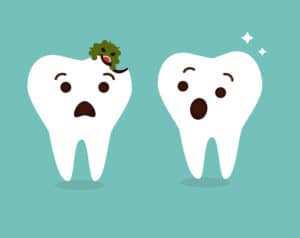Straight Talk About Tooth Decay
Tooth decay is inherently an unpleasant subject. Our culture puts a lot of emphasis and value on a bright smile as an indicator of both attractiveness and health, and tooth decay is the antithesis of that! However, it’s an important subject–tooth decay is one of the most common diseases in the country, and understanding what it is, how common it can be, and what causes it are big steps in preventing it in the first place. Most instances of tooth decay could be prevented with better regular care, including brushing and flossing routines.
So, what is tooth decay? Also known as cavities or dental caries, tooth decay is what happens when bacteria build upon a portion of a tooth. The bacteria produce acids as part of their waste, which in turn eat their way through the enamel, creating a cavity or pocket in which decay and bacteria thrive. If untreated, this hole in the enamel can cause all sorts of problems, ultimately resulting in tooth loss.
How common is tooth decay? More common than many of us realize. In the United States, for example, more than 40% of adults have reported feeling tooth or gum pain in the last year. 80% of us have at least one cavity by age 34. Tooth decay costs the nation billions every year, both in direct medical cost and in time lost at work. It’s not an insignificant problem and it is one that could be addressed fairly easily if we all adopted better brushing and flossing habits and regular dentist visits.
This is why it’s important to know the signs of tooth decay–it happens to the best of us and it’s easy to have it sneak up on you. While symptoms vary from person to person and case to case, here are some common signs that a problem may exist:
- Toothache, spontaneous pain or pain that occurs without any apparent cause
- Tooth sensitivity
- Pain when you bite down
- Mild to sharp pain when eating or drinking something sweet, hot or cold
- Visible holes or pits in your teeth
- Brown, black or white staining on any surface of a tooth
If any of these symptoms occur regularly or persist, it’s time to see a dentist and explore what the next steps in treatment will be. Your dentist will most likely want to take some x-rays and perform an exam, and then they’ll tell you which of several treatment options you may need. This can range from a simple filling all the way to a crown or other prosthesis. Unfortunately, there’s no way, yet, to grow back large portions of damaged teeth, so replacing them with an artificial material is the only way to go.
However, it’s important to remember the real treatment for tooth decay is prevention. A regular brushing and flossing routine is vital, as is a healthy diet free of excess starches, sugars, and acids. Your dentist plays an important role in prevention as well. Regular exams can help detect problems before they get serious, and regular cleanings can help keep your teeth bright, shiny, and healthy. This sort of preventative care can help avoid problems or lessen their impact should they occur. So don’t wait, make an appointment today and let us get you started on the road to great oral health!
